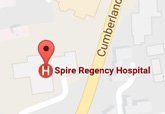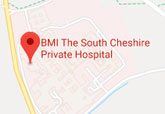Cervical Disc Replacement
The cervical spine is located in the neck region and consists of seven bones arranged one on top of the other. Cushioning tissue called vertebral discs located between the vertebrae act as shock absorbers, allowing easy movement of the neck. Wear and tear and advancing age can damage these discs, leading to pain and disability. Artificial cervical disc replacement surgery is a procedure where the damaged inter-vertebral disc is removed and replaced with an artificial implant. The surgery relieves neck pain as well as restores the normal range of motion of the neck.
What are the indications and contraindications?
Cervical disc replacement surgery is an alternative to the traditional cervical spine fusion surgery, which involves the permanent fusion of two vertebral bodies, eliminating movement between them. Artificial cervical disc replacement is usually indicated when conservative treatments do not help relieve the following:
- Neck stiffness and pain
- Pain, weakness or numbness of the arms and legs
- Difficulty in walking
- Headache
Contraindications
Artificial cervical disc replacement is contraindicated in the presence of rheumatoid arthritis, pregnancy, morbid obesity, significant osteoporosis or an active malignancy, insulin-dependent diabetes and allergies to stainless steel.
Procedure
The procedure is performed under general anaesthesia and is guided with the help of X-ray imaging (fluoroscopy). You will lie face up on the operating table. Your surgeon approaches the cervical spine from the front or side of your neck through a small incision. The important structures in your neck are gently moved to the side to access the cervical spine. The damaged disc along with any loose disc fragments or bone spurs are identified and removed. The artificial disc device is sized and placed in the prepared disc space, restoring its normal height and relieving any pressure over the spinal nerves. The incisions are closed and covered with a dressing.
Following surgery, your neck may be immobilized in a collar. You will need to keep the incision area clean and dry. Refrain from hot tubs, swimming, heavy lifting, driving and smoking. You can initiate physical therapy as directed by your surgeon. Take medications as recommended by your doctor. Arrange for a follow-up appointment with your doctor. You may be able to resume light activities in a week or two, and complete normal activities in six weeks.
Risks and Complications
The potential risks associated with artificial disc replacement surgery may include infection, bleeding, nerve injury, difficulty in breathing or swallowing, change in your voice, leakage of spinal fluid, or a break or loosening of the prosthesis, requiring further surgery. Call your doctor if the incision site shows signs of infection such as pain, redness, swelling, or change in the quantity and smell of the drainage, or if you develop fever over 101° F.
Advantages
The advantages of artificial cervical disc replacement include:
- Maintains normal neck movement
- Lowers the risk of degeneration of adjacent segments
- Does not require bone graft
- Allows early neck motion after surgery
- Faster return to daily activities




